
All Quiet on the Western Front is a novel by Erich Maria Remarque, a German veteran of World War I. The book describes the German soldiers' extreme physical and mental trauma during the war as well as the detachment from civilian life felt by many upon returning home from the war.
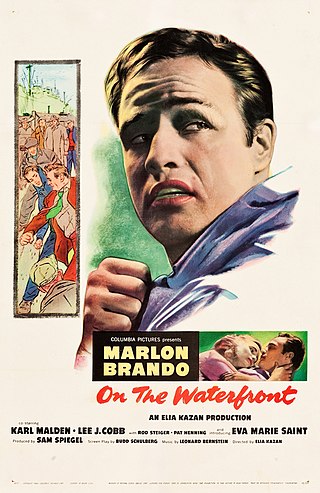
On the Waterfront is a 1954 American crime drama film, directed by Elia Kazan and written by Budd Schulberg. It stars Marlon Brando, and features Karl Malden, Lee J. Cobb, Rod Steiger, Pat Henning and Eva Marie Saint in her film debut. The musical score was composed by Leonard Bernstein. The black-and-white film was inspired by "Crime on the Waterfront" by Malcolm Johnson, a series of articles published in November–December 1948 in the New York Sun which won the 1949 Pulitzer Prize for Local Reporting, but the screenplay by Budd Schulberg is directly based on his own original story. The film focuses on union violence and corruption among longshoremen, while detailing widespread corruption, extortion, and racketeering on the waterfronts of Hoboken, New Jersey.

The Manchurian Candidate is a 1962 American neo-noir psychological political thriller film directed and produced by John Frankenheimer. The screenplay is by George Axelrod, based on the 1959 Richard Condon novel The Manchurian Candidate. The film's leading actors are Frank Sinatra, Laurence Harvey, and Angela Lansbury, with co-stars Janet Leigh, Henry Silva, and James Gregory.

Ninotchka is a 1939 American romantic comedy film made for Metro-Goldwyn-Mayer by producer and director Ernst Lubitsch and starring Greta Garbo and Melvyn Douglas. It was written by Billy Wilder, Charles Brackett, and Walter Reisch, based on a story by Melchior Lengyel. Ninotchka marked the first comedy role for Garbo, and her penultimate film; she received her third and final Academy Award nomination for Best Actress. In 1990, Ninotchka was selected for preservation in the United States National Film Registry by the Library of Congress as being "culturally, historically, or aesthetically significant". In 2011, Time also included the film on the magazine's list of "All-Time 100 Movies".

Lewis Milestone was an American film director. Milestone directed Two Arabian Knights (1927) and All Quiet on the Western Front (1930), both of which received the Academy Award for Best Director. He also directed The Front Page (1931), The General Died at Dawn (1936), Of Mice and Men (1939), Ocean's 11 (1960), and received the directing credit for Mutiny on the Bounty (1962), though Marlon Brando largely appropriated his responsibilities during its production.
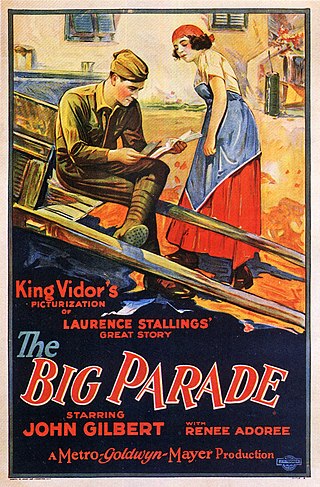
The Big Parade is a 1925 American silent war drama film directed by King Vidor, starring John Gilbert, Renée Adorée, Hobart Bosworth, Tom O'Brien, and Karl Dane. Written by World War I veteran Laurence Stallings, the film is about an idle rich boy who joins the U.S. Army's Rainbow Division, is sent to France to fight in World War I, becomes a friend of two working-class men, experiences the horrors of trench warfare, and finds love with a French girl. A sound version of the film was released in 1930. While the sound version of the film has no audible dialog, it featured a synchronized musical score with sound effects using both the sound-on-disc and sound-on-film process.

To Be or Not to Be is a 1942 American black comedy film, directed by Ernst Lubitsch, starring Carole Lombard and Jack Benny, and featuring Robert Stack, Felix Bressart, Lionel Atwill, Stanley Ridges and Sig Ruman. The plot concerns a troupe of actors in Nazi-occupied Warsaw who use their abilities at disguise and acting to fool the occupying troops. It was adapted by Lubitsch (uncredited) and Edwin Justus Mayer from the story by Melchior Lengyel. The film was released one month after actress Carole Lombard was killed in an airplane crash. In 1996, it was selected for preservation in the United States National Film Registry by the Library of Congress as being "culturally, historically, or aesthetically significant."

Sergeant York is a 1941 American biographical film about the life of Alvin C. York, one of the most decorated American soldiers of World War I. Directed by Howard Hawks and starring Gary Cooper in the title role, the film was a critical and commercial success, and became the highest-grossing film of 1941. In 2008, Sergeant York was selected for preservation in the United States National Film Registry by the Library of Congress as being "culturally, historically, or aesthetically significant".
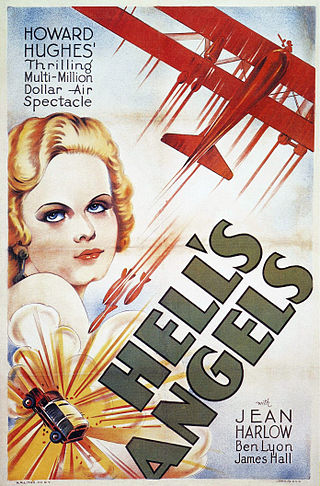
Hell's Angels is a 1930 American pre-Code independent epic war film directed and produced by Howard Hughes and director of dialogue James Whale. Written by Harry Behn and Howard Estabrook and starring Ben Lyon, James Hall and Jean Harlow, it was released through United Artists. It follows two dissimilar brothers, both members of the British Royal Flying Corps during the First World War.

The Big Sleep is a 1946 American film noir directed by Howard Hawks. William Faulkner, Leigh Brackett and Jules Furthman co-wrote the screenplay, which adapts Raymond Chandler's 1939 novel. The film stars Humphrey Bogart as private detective Philip Marlowe and Lauren Bacall as Vivian Rutledge in a story that begins with blackmail and leads to multiple murders.
Show Boat is a 1936 American romantic musical film directed by James Whale, based on the 1927 musical of the same name by Jerome Kern and Oscar Hammerstein II, which in turn was adapted from the 1926 novel of the same name by Edna Ferber.

Westfront 1918 is a German war film, set mostly in the trenches of the Western Front during World War I. It was directed in 1930 by G. W. Pabst, from a screenplay by Ladislaus Vajda based on the novel Vier von der Infanterie by Ernst Johannsen. The film shows the effect of the war on a group of infantrymen portrayed by an ensemble cast led by screen veterans Fritz Kampers and Gustav Diessl.

Mrs. Miniver is a 1942 American romantic war drama film directed by William Wyler, and starring Greer Garson and Walter Pidgeon. Inspired by the 1940 novel Mrs. Miniver by Jan Struther, it shows how the life of an unassuming British housewife in rural England is affected by World War II. Produced and distributed by Metro-Goldwyn-Mayer, its supporting cast includes Teresa Wright, May Whitty, Reginald Owen, Henry Travers, Richard Ney and Henry Wilcoxon.

John J. Mescall, A.S.C. was an American cinematographer. He photographed such silent films as Ernst Lubitsch's The Student Prince in Old Heidelberg (1927), but he is best known for his work in the 1930s at Universal Pictures, where he often worked on the films of James Whale. Mescall was famous for his elaborate, some might say grandiose, effective camera movements, in which the camera would often track completely across or around a set, or even one performer. He did not always use these kinds of camera movements, but his most famous films all have them.

William Robertson Bakewell was an American actor. He achieved his greatest fame as one of the leading juvenile performers of the late 1920s and early 1930s.
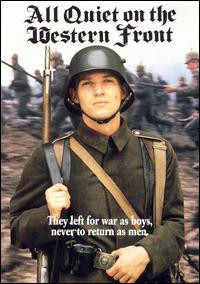
All Quiet on the Western Front is an epic anti-war television film produced by ITC Entertainment. It was released on November 14, 1979. Based on the 1929 book of the same name by Erich Maria Remarque, it stars Richard Thomas and Ernest Borgnine. Directed by Delbert Mann, this film is a joint British and American production for which most of the filming took place in Czechoslovakia.

The Treasure of the Sierra Madre is a 1948 American Western film written and directed by John Huston. It is an adaptation of B. Traven's 1927 novel of the same name, set in 1925, and follows two downtrodden men who join forces with a grizzled old prospector, in searching for gold in Mexico.
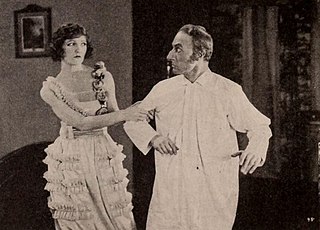
Arnold Lucy was a British theatre and film actor, best known as Professor Kantorek in All Quiet on the Western Front (1930).

All Quiet on the Western Front is a 2022 German epic anti-war film based on the 1929 novel of the same name by Erich Maria Remarque. It is the third film adaptation of the book, after the 1930 and 1979 versions. Co-written, directed and co-produced by Edward Berger, it stars Felix Kammerer, Albrecht Schuch, Daniel Brühl, Sebastian Hülk, Aaron Hilmer, Edin Hasanovic, and Devid Striesow.
Felix Kammerer is an Austrian actor. After working on the Berlin stage, he made his feature film debut by playing the lead role in the war drama All Quiet on the Western Front (2022). He has since starred in the war miniseries All the Light We Cannot See (2023).





















